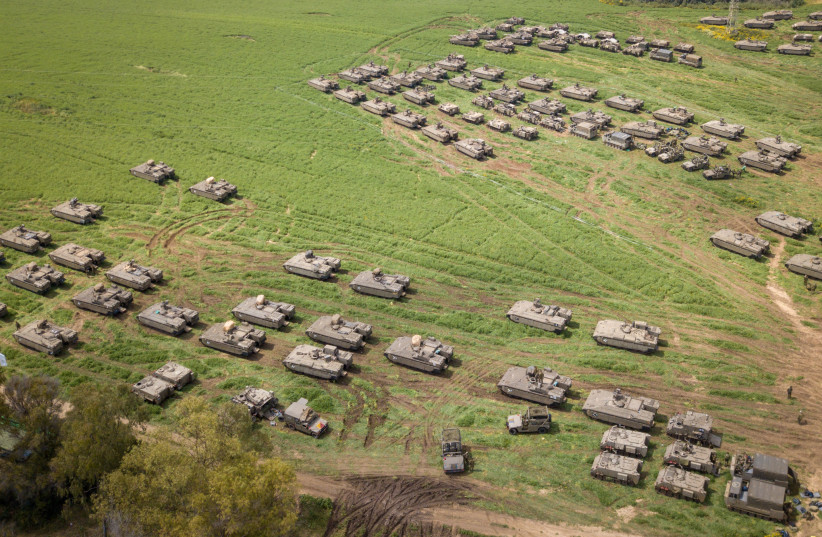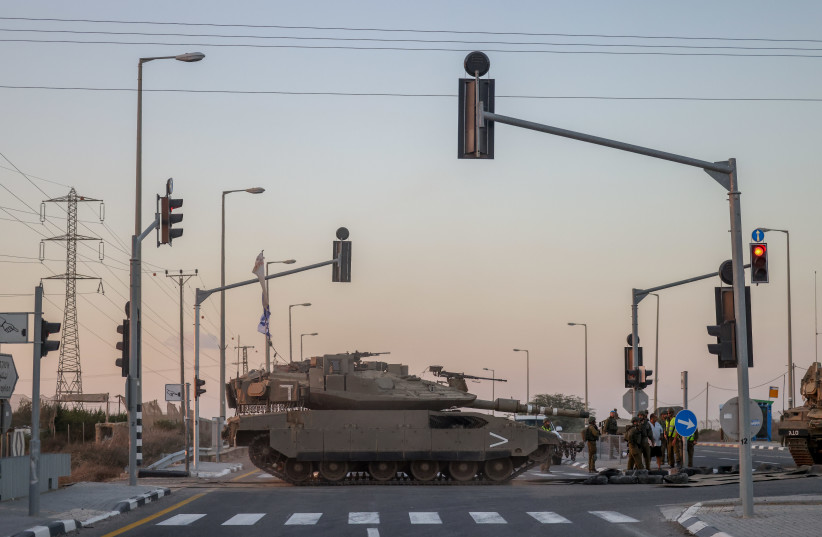The ground invasion of Gaza will be larger than anything that happened in the 2014 conflict, the war cabinet estimates, yet it will still be limited. While this prediction has not been confirmed, it has been leaked and not denied. It is a plausible argument that one of the goals for the war against Hamas is to create a new northern Gaza security zone.
This particular idea has pros and cons, the most obvious pro being a lesser number of dead soldiers. In one IDF briefing, senior officials made a big deal about the enhanced armored personnel carriers the IDF currently has, suggesting that force protection during the invasion is not just a goal, but possibly a primary one.
A different briefing suggested that one of the reasons that the invasion has been delayed was to further tailor the invasion to force protection, a concept further emphasized by IDF Chief of Staff Lt.-Gen. Herzi Halevi in a speech he made on Tuesday.
Back in 2014, the running estimates were that Israel would lose 500-1,000 soldiers in a deep invasion of Gaza – which was a chief reason for why this did not happen; most of the invasion was limited to a 2 km.-deep incursion into the outskirts of the Strip.
Prioritizing force protection concerns
While initially Prime Minister Benjamin Netanyahu and others implied that these issues would not hold Israel back, due to the horrors of Hamas’s massacre of civilians on October 7, more than two weeks of delay suggest that force protection concerns have been a significant, if not decisive, factor in planning grand strategy.

The government is expected to order a deeper invasion than in 2014, both because it has repeatedly said it would, because an invasion without a deep entry would limit the targets the ground forces could reach, and because anything less would likely lead to public demands for across-the-board resignations.
If the IDF does not eliminate the number of Hamas terrorists it said it would – because it spends less time or goes less deep into Gaza – how will it and the government make Israel safer than it did after 2014, and how could it explain a changed reality?
One proposal for this is to create a security zone in northern Gaza. Some pros for this is that Israel could withdraw faster from the rest of Gaza, signaling clearly to the world that it has not reoccupied Gaza, and it could further reduce any Hamas rocket arsenal that still exists. The more the arsenal is depleted, the harder it will be for Hamas to fire barrages of rockets at Israel.
This would not necessarily hermetically end the rocket threat, but it would put a large number of mortars and rockets out of range, and also make others less effective. Another advantage would be as a major power move that Israel has not undertaken since it withdrew from Gaza in 2005 – and could be presented to the Israeli public as such.
If this sounds familiar, it should, because it is not so different from Israel’s formula after the 1982 First Lebanon War. The IDF maintained a security zone in southern Lebanon for the next two decades.
Results of the withdrawal
By the year 2000, when the IDF withdrew, the southern security zone concept was seen as a failure by most defense officials, or at the very least, a burden that left soldiers constantly exposed to attacks in enemy territory.
Israel did not want to be in this territory, save for the goal of keeping Hezbollah from attacking Israeli civilians, but this concept did not go well. Hezbollah continued to provoke Israel constantly until the violence eventually escalated to the 2006 Second Lebanon War.
Yet, Israel did not decide to re-establish the security zone in southern Lebanon in 2006. The zone was still viewed as a mistake that had more costs than benefits over time.

Why wouldn’t a northern Gaza security zone meet the same fate? In the short term, the Gaza security zone would have widespread Israeli support, because the trauma of 1,400 slain innocents will not dissipate quickly.
However, if on a daily or monthly basis, soldiers are attacked and killed in the zone – as happened in Lebanon – would support for it not eventually erode?
The same may be true not just on a local level, but on a global one: The US and EU may support such a zone temporarily, but are unlikely to keep doing so in the long run.
A large invasion and the establishment of a security zone would not be what the government and military originally promised, but may contain a chance of securing the goals of a changed reality in Gaza. But while it might reduce the number of soldiers killed in the short term, it would leave Israel exposed to a Gaza where Hamas returns to power – and more deaths in the long term.
Whatever the government ultimately decides, there is no simple solution to a very complicated Gaza threat.
